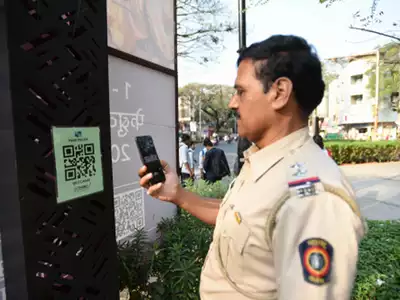
-
Call us at
+91 - 7448000800
-
Send an email
sales@credencetracker.com
-
Sunday - Closed
Mon - Sat(24x7)
Navigating towards a secure future


Call us at
Send an email
Sunday - Closed
Navigating towards a secure future


Clients:
Category:
A police patrolling barcode system is a specialized technology solution used by law enforcement agencies to track and manage patrolling activities, monitor officer movements, and ensure the enforcement of laws and regulations effectively. This system typically integrates barcode technology with mobile devices, such as smartphones or ruggedized handheld devices, to enhance the efficiency and accountability of police patrols. Here are some key components and features of a police patrolling barcode system:
Barcode Tags or Labels:
Fixed or mobile barcode labels are strategically placed at key locations, checkpoints, or assets that officers need to patrol or inspect. Each location or asset is assigned a unique barcode.Mobile Devices:
Law enforcement officers carry mobile devices equipped with barcode scanners and specialized software. These devices can be smartphones, tablets, or dedicated handheld devices.Barcode Scanning:
Officers use their mobile devices to scan the barcode labels at each patrol checkpoint or asset location. The barcode scanner captures the unique identifier associated with that location.Real-time Data Capture:
The system records the date, time, and location of each barcode scan in real-time. This information is transmitted to a centralized database.
Patrol Route Management:
The system can be used to define and manage patrol routes for officers. It ensures that officers follow prescribed routes and checkpoints during their patrols.Officer Accountability:
The system tracks the movements of each officer during their patrol shift, including where they've been and when they were at specific locations. This data is crucial for accountability and monitoring.Incident Reporting:
Officers can use the mobile devices to report incidents, observations, or issues encountered during their patrols. These reports are linked to specific locations and can include multimedia evidence (photos, videos).Exception Handling:
If an officer misses a checkpoint or deviates from the assigned route, the system can generate alerts for supervisors to investigate.Historical Data:
The system maintains historical data of patrol activities, allowing supervisors to review past patrol routes and incidents.
Reporting and Analytics:
Supervisors and administrators can generate reports and analytics to assess patrol effectiveness, identify patterns, and allocate resources more efficiently.Integration:
Some police patrolling barcode systems can integrate with other law enforcement software, such as records management systems (RMS) and dispatch systems, for seamless data sharing and reporting.
Compliance and Evidence:
The system helps law enforcement agencies demonstrate compliance with regulations and provides evidence of patrol activities, which can be essential in legal proceedings.By implementing a police patrolling barcode system, law enforcement agencies can improve officer accountability, enhance the visibility of patrol activities, and optimize resource allocation. It contributes to a safer and more organized approach to patrolling, resulting in better law enforcement outcomes. When selecting a system, agencies should consider factors such as mobile device compatibility, scalability, and data security.
Our Address
Block no 07, Krida Square Rd, Krida Chowk, Chandan Nagar, Nagpur, Maharashtra 440024

Get In Touch
Email us